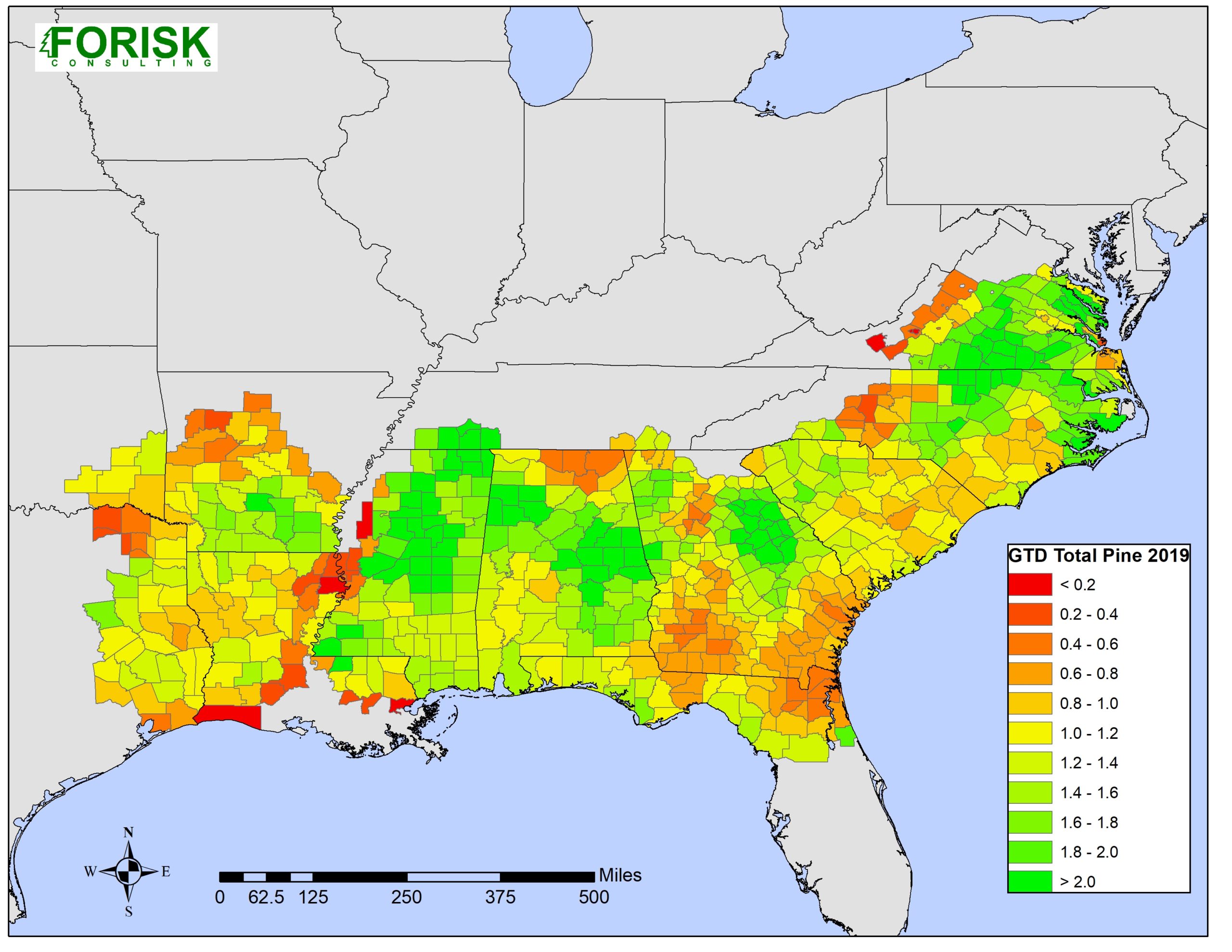This post is the fourth in a series related to the Q3 2020 Forisk Research Quarterly (FRQ), which includes forest industry analysis and timber price forecasts for North America. The post includes excerpts from our Regional Summary for the U.S. South. Alec Roach, Forest Industry Analyst for Forisk, contributed to this research.
Forisk’s clients have asked for a granular (county-level) assessment of growth-to-drain for pine in the South. Sawmills are expanding and new mills are coming online. What is growth-to-drain today? What will growth-to-drain be in five years when new and expanded sawmills are fully operational?
Growth-to-drain analysis compares the annual growth of timber to annual harvest volumes to provide a measure of market demand relative to supply. A growth-to-drain ratio of 1.0 indicates a balanced market that harvests timber at the rate of growth. Growth that exceeds demand by a large margin indicates oversupply. Conversely, annual removals that exceed growth indicate competitive markets for raw materials.
Forisk conducted an analysis of growth-to-drain in the U.S. South by “smoothing” the timber growth data to better account for local timber markets. The “smoothing” exercise spatially allocated county-level growth to all adjoining counties. This mimics local supply basins for mills. The analysis uses Forisk’s mill database to distribute mill demand to the county level based on assumed procurement distances.
The average pine growth-to-drain for the South in 2019 is 1.26, indicating a general oversupply of timber in the region. A heat map by county highlights local variations, with tight markets in north Florida and south Georgia (Figure 1). Areas of coastal South Carolina and North Carolina and central Texas and Louisiana also have relatively balanced timber supply with demand. Northern Mississippi and Alabama and northeast Georgia have an oversupply of pine growth relative to demand.

Fast-forward six years to 2025, and the timber supply profile is more balanced across the region, with an average pine growth-to-drain of 0.95. During this time, 17 sawmills and 10 pellet mills expand or come online in the region. Coastal areas are generally more constrained, while northern Mississippi and Alabama maintain ample timber supply relative to demand. Sawmill startups and expansions in southern Alabama bring the region more in balance.
To learn more about the Forisk Research Quarterly (FRQ), click here or call Forisk at 770.725.8447. To learn more about the North American Forest Industry Capacity Database, click here or email Heather Clark at hclark@forisk.com.

Leave a Reply